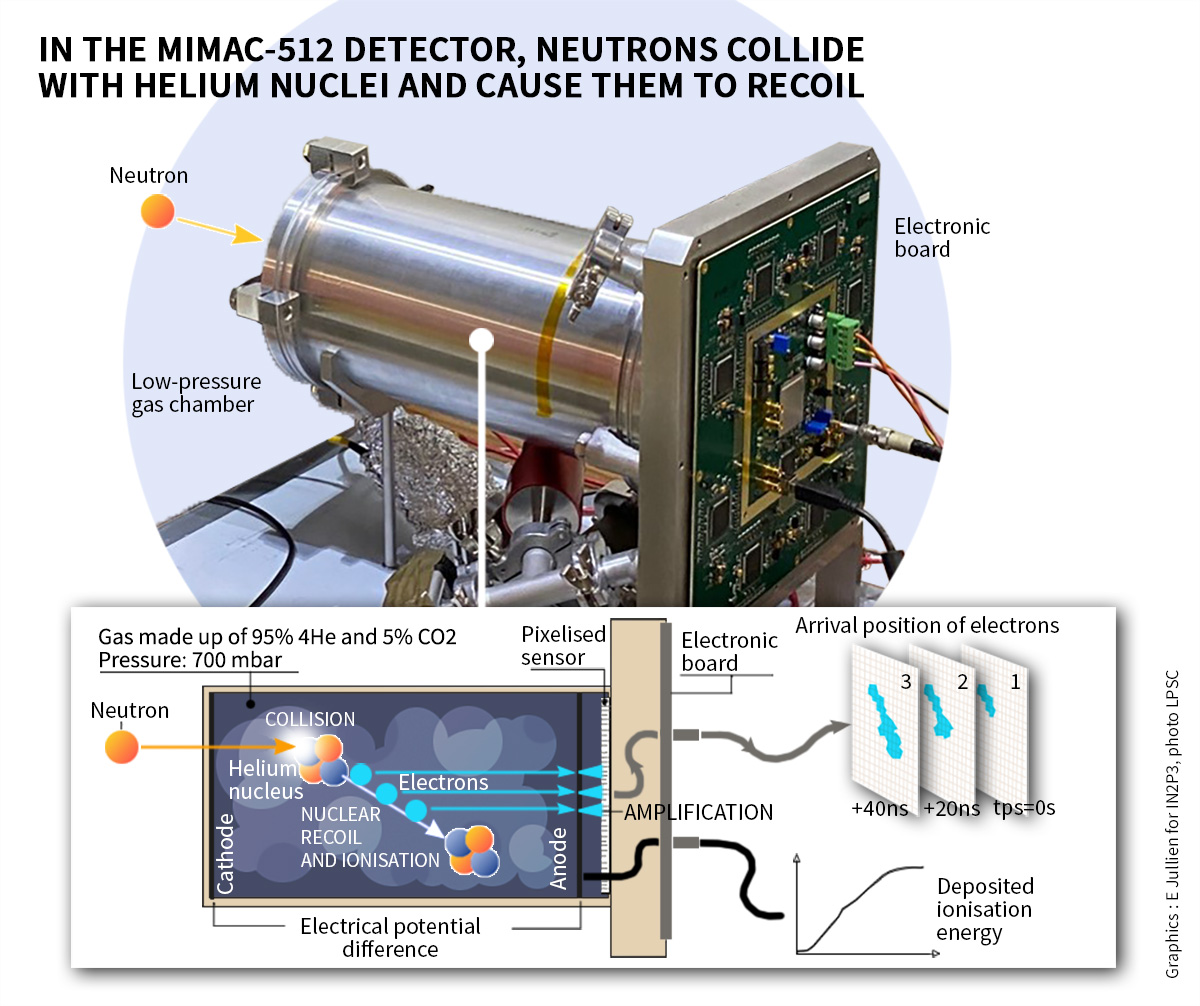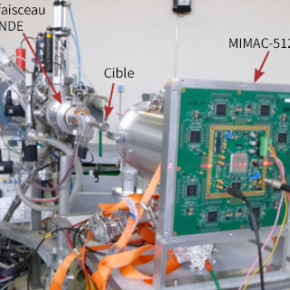First successful low-energy test for the MIMAC-512 neutron detector
A team from the LPSC (1) has successfully tested a sensor capable of measuring the energy of low-energy neutrons (around the keV), which is lower than what existing detectors allow. Called MIMAC-512 and inspired by a technology developed for tracking 'hypothetical' dark matter particles, it could open up a wide range of applications.
The MIMAC-512 neutron spectrometer, developed at the Laboratoire de Physique Subatomique et Cosmologie (LPSC) in Grenoble, has taken a decisive step forward by passing its first test to measure the energy of epithermal neutrons, i.e. low-energy neutrons in the kilo-electronvolt (keV) range, which no detector has been able to characterise until now. In this energy range, the background dominates and current detectors can at most count them. MIMAC-512 therefore marks a breakthrough by making it possible to determine their energy.
Dark matter detection technique
« MIMAC-512 is based on a technique that we developed for a directional dark matter detection experiment," explains Nadine Sauzet, an engineer in the LPSC's detector and instrumentation department who was involved in developing the detector. This technique is based on the detection of the nuclear recoil induced when a neutron collides with the nucleus of the gas. This recoil carries away a fraction of the neutron's energy. It then deposits its energy by stripping electrons from the surrounding gas, resulting in a cloud of electrons along its path. It is the characteristics of this recoil that allow us to trace the energy of the incident neutron. » This is how way it works. An electric field transfers the electrons to a pixelated plane sensor to form a 2D image of the recoil trace. To obtain the 3D shape, the device takes into account the order of arrival of the electrons and their drift time in the gas. It performs 50 million scans of its surface per second in order to precisely date the arrival of each electron. All this information is used to deduce the angle at which the recoil was emitted in relation to the direction of the incident neutron and the energy that the neutron had.

Tested on IRSN's AMANDE facility
MIMAC-512 is developed within a collaboration with IRSN (2). It was tested in an 8 keV mono-energetic neutron beam resulting from the 45Sc(p,n) reaction on the AMANDE facility ( Accélérateur pour la métrologie et les applications neutroniques en dosimétrie externe) of IRSN's Laboratoire de micro-irradiation, de métrologie et de dosimétrie des neutrons (LMDN). "The detector worked well and was able to recover the energy of the neutrons produced, which is very encouraging. The next step is to develop a metrological installation producing high-flux epithermal neutrons, then to characterise it with MIMAC-512", explains Nadine Sauzet.

Image : LPSC IN2P3
Image: LPSC IN2P3
Hopefully, there is a growing interest in the design of facilities that produce epithermal neutron fields of a few keV, in a region where the cross sections vary rapidly with energy, in metrology to calibrate dosimeters, or in medical physics for the implementation of new therapies. This demonstration of the operation of MIMAC-512 opens up new perspectives for the characterisation of the reference installation that the LMDN is currently designing around its T400 accelerator in collaboration with the LPSC.
(1) Laboratoire de physique subatomique et de cosmologie (LPSC)
(2) Institut de radioprotection et de sûreté nucléaire (IRSN)
